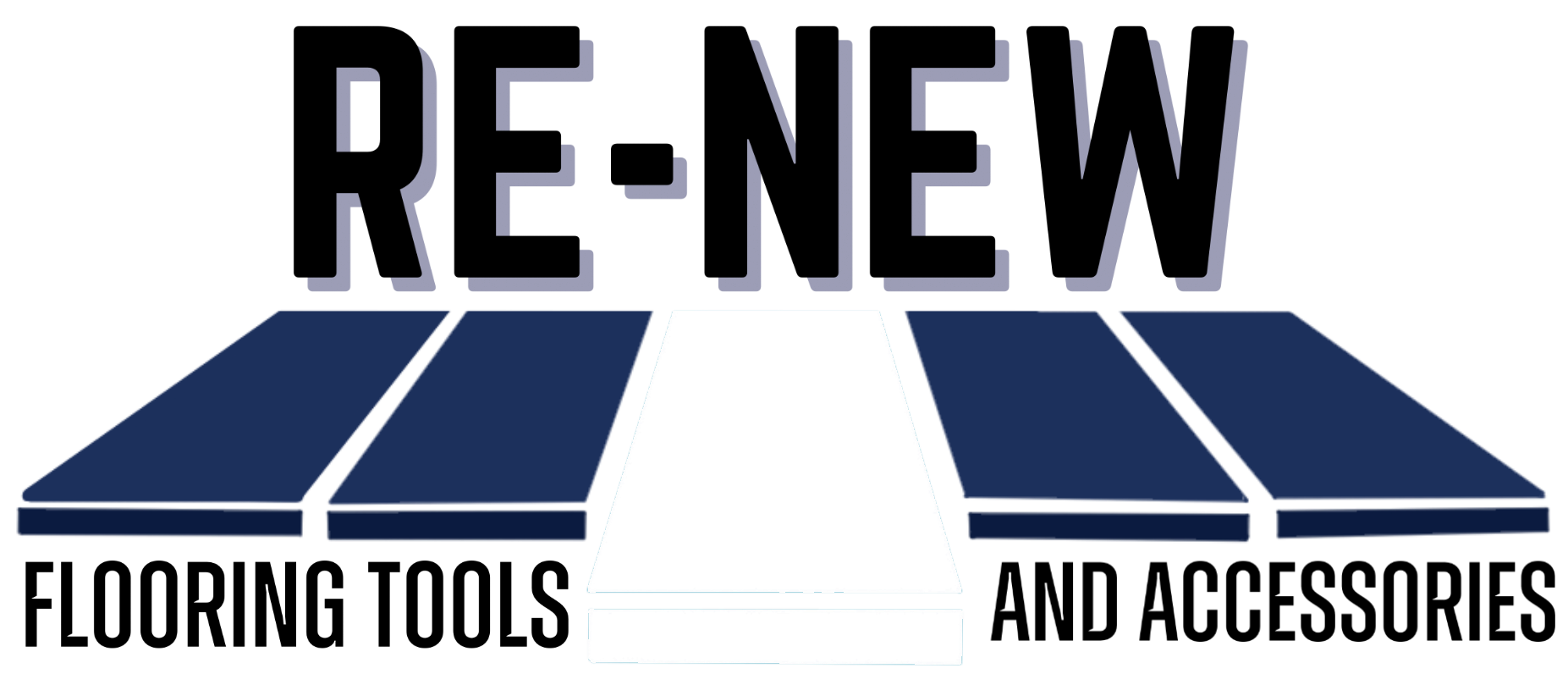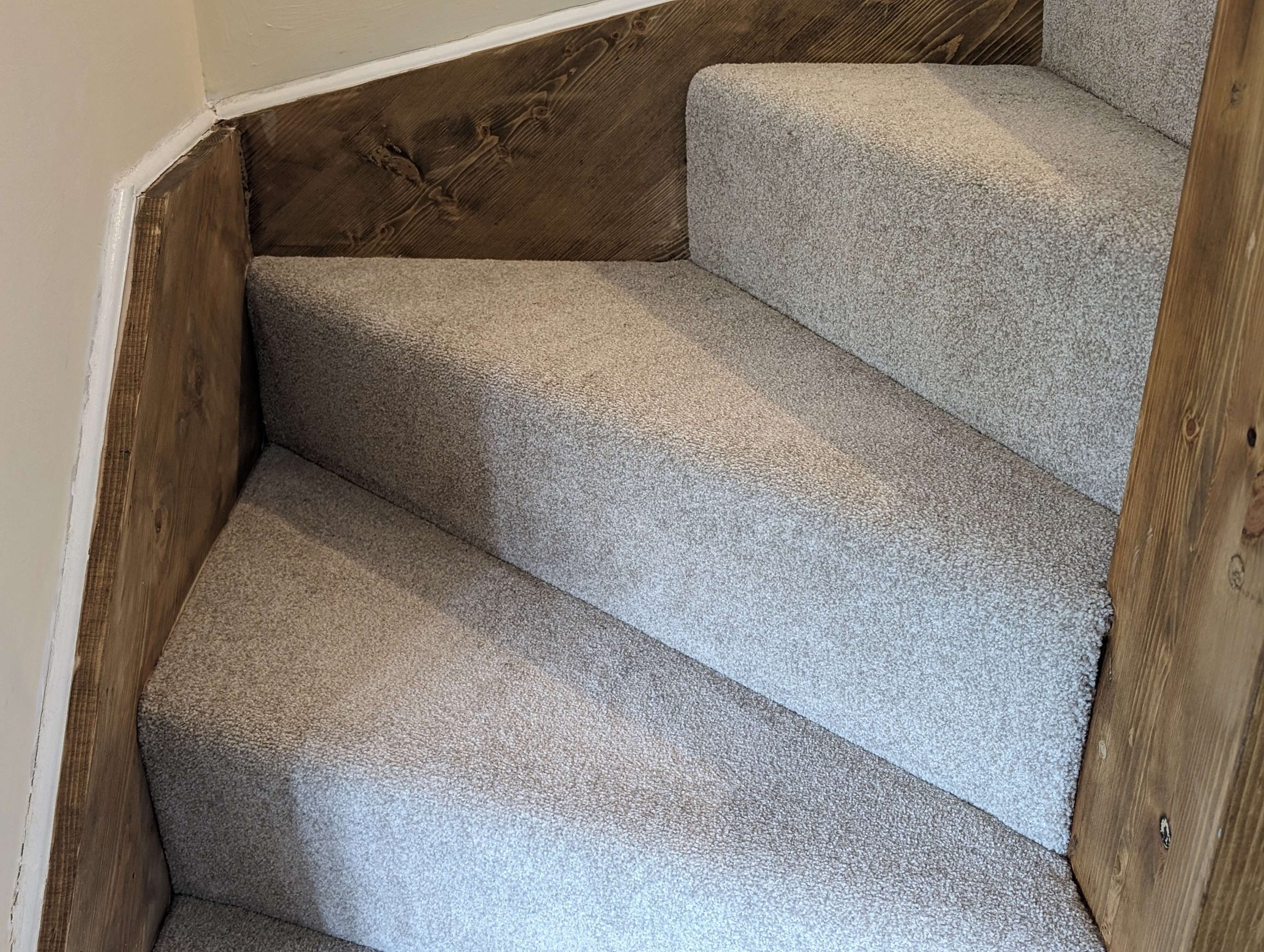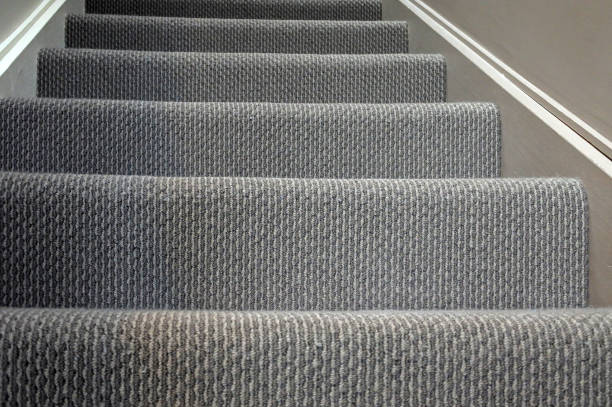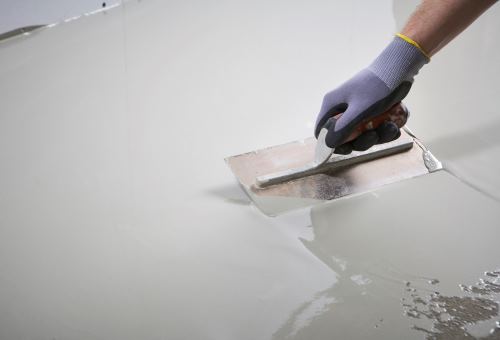Full Carpet Fitting Guide
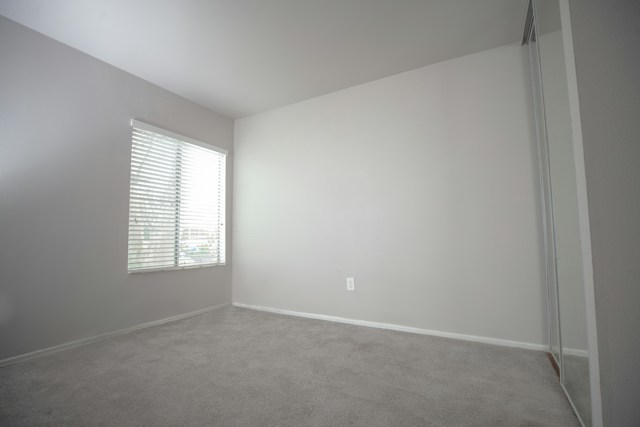
DIY Carpet Installation Tips and Tricks
Installing carpet is challenging, whether you’re putting it in at home or yourself can save you money on traders. If you’re buying a new carpet, the cost of a professional fitter will be a fraction of the cost of the carpet itself, but if you’re getting used carpet or relaying your existing carpet, DIY installation is worth trying.
The main points to remember are to cut the carpet well, stretch it taut and hide the seams. To do this well, it’s crucial to have the right tools because these make the job so much quicker. When you begin installing carpets for yourself or others, these tips will help you get it right.
Bare Minimum Carpet Laying Tools
If you’re laying your carpet to save money, you probably don’t want to waste money on tools you don’t need. Here are the essential tools for DIY carpeting that you can’t lay carpet without.
- Carpet Knife: for cutting the carpet to the right size and trimming the edges when you’re done, you need a quality carpet knife with a sharp blade. Hook blades and straight blades both have their advantages, and you can usually swap between the two in your utility knife handle to get the best of both. What type of knife should I use for carpet?
- Knee Kicker or Carpet Stretcher: This is the most effective tool for stretching the carpet out effectively and making sure you don’t have any ripples. One end grips the carpet with a velcro-style panel of small hooks, while the other end has a pad for you to kick your knee against. The impact of your knee on this pad pushes the whole kicker towards the wall, stretching the carpet out. Buy Knee Kickers Online
- Seaming tool & tape: If you’re installing carpet in a large room or the room has an irregular shape, you’ll need a good carpet seamer. You can use seaming tape and an electric seaming iron, depending on how hi-tech you want to go. The least technical is also the most time-consuming technique: a carpet needle and waxed thread.
- Tack Strip: These are strips of wood with tacks sticking up through them to anchor the carpet in place. If you’re installing carpet onto wood, you can nail or screw tack strips down. However, if you’re installing on concrete, you’ll need a strong adhesive.
- Hacksaw: to cut the tack strip you’ll need a saw. A small hacksaw will be enough.
- Hammer: you can get carpet layers hammers or a small tacking hammer will be the right size for the job.
- Measuring Tape: You probably already have this, but it’s important not to leave it out. Remember that if you cut the carpet too big, you can always trim it, but cutting too small makes for a much longer job.

Tools To Make The Job Go Faster
To do a really good job quickly, you might need some more specialised tools. These are the top tools tradies use that can help carpet fitting go smoothly.
Carpet Trimmer
How is a carpet trimmer different to a carpet knife? A carpet trimmer or carpet cutter is a tool that helps cut carpets in straight lines quickly, without damaging the floor beneath. They may have a built-in guide to help achieve a straight edge and slots for interchangeable blades.
Hook Knife
Hook knives have larger curved blades than can be inserted into a utility knife, and are preferred by some carpet fitters. They are typically sold as lino or vinyl tools, but they are also useful for quickly trimming carpet where the edge will be hidden.
The blade hooks under the carpet to cut through the tough matting. It is best for cutting safety flooring, as its hooked shape makes it easier to apply pressure when cutting through tough materials.
Hook blades are also stronger than other types of blades, preventing accidents when pulling through tough material.
Hammer Tacker or Nail Punch
A hammer tacker is essentially a large stapler and is a great lightweight tool for rapid tacking. Instead of holding tacks still, the hammer tacker is loaded with staples. Use a hammer to hit the top, as you would press a stapler, to secure the carpet down to the floor. Buy all the tools a carpet fitter needs in our Carpet Tool Kit Bundle.
Installing Carpet on Concrete
If you are installing on a concrete floor, you also need:
- Waterproof filler to cover any cracks or depressions in the concrete
- A construction adhesive, like No More Nails, to attach the tack strips
Check for central heating pipes lying too close to the concrete surface. The heat from shallow-lying pipes could cause problems with gripper strips or tack strips.
You can test this by turning the heating up to full for half an hour and walking across the floor barefoot. You will feel the heat through the floor if any are present.
If there are shallow pipes, use carpet adhesive or carpet glue instead of tack strips.
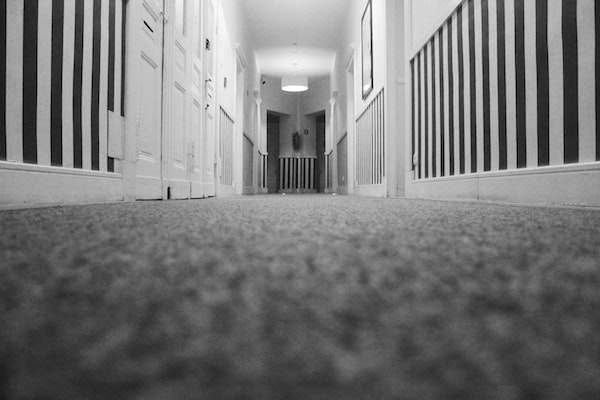
Tips for Efficient Carpet Projects:
Streamline your flooring process when laying carpet with these tips & tricks. You can make it more efficient and ensure a professional finish by taking your time and ensuring your tools are in good nick.
Measure Twice, Cut Once
- Measure the length and width of the room.
- Add 15-20cm extra for wastage.
- Multiply these two numbers together to calculate the square footage.
- If you have an irregular shape, such as alcoves or L shapes, you can separate the area into rectangles and measure the length and width of each, then add them together.
“Always overlap the skirting before you cut it. Because if you cut one end too short and you get to the other side, you aren’t going to stretch it to fit.”– Graham Lane-Doggett, Tapi Carpets, Solihull
As Graham says, it’s always best to overestimate the carpet you need. You won’t save money by ordering the exact measurement, because if you get it too small, you’ll have to buy double.
4. You also need to know the perimeter of the room to figure out how many tack strips to get. For a rectangular room, the calculation is width x length x 2. However, just like the area, alcoves and L-shapes can complicate things. Tack strips are usually sold in 1.5m lengths.
Sharp Blades
Chefs and carpet fitters both know a sharp blade is safer than a dull one. If your blade is dull, you face more risks of snags and slips, making you more likely to cut yourself.
A sharp carpet knife can glide through the tough nap at the back of the carpet, so you can be confident you’ll cut in a straight line.
Always have a fresh blade ready by keeping a stock of straight and hooked carpet knife blades in your carpet fitting kit.
DIY Carpet Fitting
Fitting carpet yourself is a challenge, but you’re in the right place. Follow these steps to make sure you get it right first time.
1. Prepare the Subfloor Properly
The floor must be smooth and clear of debris to get a quality finish. If you’re relaying existing carpet, this probably won’t be an issue.
If the floor has never had carpet on before, you may need to use filler to smooth any depressions or cracks to avoid dips in your carpet. You also need to smooth any bumps and scrape off any drips of dried plaster or paint.
You’ll also need to remove the threshold bars that are holding the existing carpet down in the doorway.
2. Install Tack Strip
You’ll need tack strip or gripper rods around the whole perimeter of the room to keep it in place.
- Place tack strips around the edge of the room, cutting to length with a small saw or tinsnips where needed.
- Use glue if working on concrete to secure the strip.
- Use nails or screws if on wood to secure the strips properly.
3. Install Carpet Underlay
This is the foam sheet that makes sure the floor is comfortable to walk on and extends the life of the carpet. Underlay comes in rolls and needs to be laid in rows.
Loosely lay the underlay with the rubber side down. Start against one wall and lay in rows.
Trim underlay up to the edge of the gripper rods, not over them. Trim it around doorways and alcoves, making sure it all lays flat.
Push the rows tightly together and secure with carpet tape. Do not overlap the rows.
Once the underlay is free from gaps, staple or glue along the edges next to the tack strip.
4. Cut the Carpet
Now you’ve reached the main part of the job. Keep working slowly and steadily to avoid mistakes at this crucial stage.
- Unroll the carpet across the whole floor.
- To get carpet loosely into position, lift up the corner and put one foot in the corner of the room, under the carpet. Using the other foot, slide and push the carpet into place. If you need to trim the carpet, make sure you overlap the skirting boards to leave at least 5 cm excess.
- Trim with your carpet knife
- Repeat this in all corners.
- Now you’re going to trim, stretch and fix the carpet to the tack strip along one edge. Start at the longest wall and work towards the doorway.
- Cut the excess in one corner by cutting a vertical line directly above the corners, creating two 45o angles.
- Push the corner of the carpet down to the subfloor and press it onto the tack strip.
- The triangles at either side of your vertical cut will overlap. Trim the overlapping triangles to allow the carpet to lay flat.
- Use your carpet tucker or a metal ruler to crease the carpet firmly against the skirting.
- Hold the carpet flat against the floor and, using your carpet knife, cut away the excess, leave 5mm at the edge to tuck. Avoid scratching the skirting board during cutting.
5.Stretch with the Knee-Kicker
Knee kickers or carpet stretchers have teeth on one side to grip the carpet like velcro.
Position the knee kicker’s teeth about 1 inch/25mm from the skirting.
On your hands and knees, grip the kicker with your left hand and press firmly against the padded end with your left knee.
6. Tuck the Edges Under the Skirting
Once stretched, use the carpet tucker, a straight edge or the back of a hook blade to push the excess carpet between the skirting and gripper.
- Repeat all along the first wall until fixed.
- Repeat steps 4-6 on the two adjacent walls, trimming, stretching and tucking until you finish with the opposite wall to the one you started on.
Fitting Carpet around Radiator Pipes
To fit the carpet around pipes, cut a straight line from the carpet edge to the where centre of the pipe will be.
Press the carpet around the pipe, then trim around the base of the pipe, holding the blade at a 45o angle. The carpet should lie flat around the pipe.
7. Replace Threshold Bars
In the doorway, cut the carpet so that it meets the edge of the flooring in the next room.
Fit the threshold bar centrally in the door frame using screws. You may need to drill pilot holes, but check for hidden pipes and cables first.
- Push the edge of the carpet underneath the threshold bar using a screwdriver.
You’ve finished! Congratulations on completing your first DIY carpet fitting project. Now that you know all about how to fit a carpet, you’ll be in demand when your friends and neighbours are redecorating. Hang onto those tools.

Avoiding Common Pitfalls in DIY Flooring
To review, lets look at some of the most common mistakes in carpet fitting at home:
- Cutting To Exact Floor Space
Don’t trim to the edge of the floor – leave as much excess as you can until you’re about to stretch and tuck that edge. Even then, leave 5mm to tuck. If you cut it too small, you’ll have a gap at the edge of the room and the carpet will never stretch correctly. Leave excess at the edges until the last possible second.
- Using the Wrong Tools
If you try to fit carpet without a proper stretcher, for example, you’ll get a poor result and may even damage the carpet. Knee kickers, Tack strip, seam tape and a high-quality carpet knife are carpet fitting essentials.
- Not Cleaning the Floor
Trying to install carpet on a dusty, dirty subfloor is difficult, as the underlay doesn’t grip properly and you’ll kick up enough dust to make the job uncomfortable. Worse, laying carpet over debris, no matter how small, creates lumps and bumps that will be noticeable after the fact.
Don’t sweep it under the rug: remove all dirt, dust and debris from the subfloor before you start laying carpet.
Create a Professional Finish with Re-New Flooring Tools
Re-New Flooring Tools have a wide range of carpet tools for professionals and DIY carpet fitting beginners alike. We stock from top quality brands, including Sweeney, Janser, and Crain. Tradesmen get the best tools for carpet fitting online for delivery from Re-New. Order one of our Carpet Bundles to get all the tools you need.
